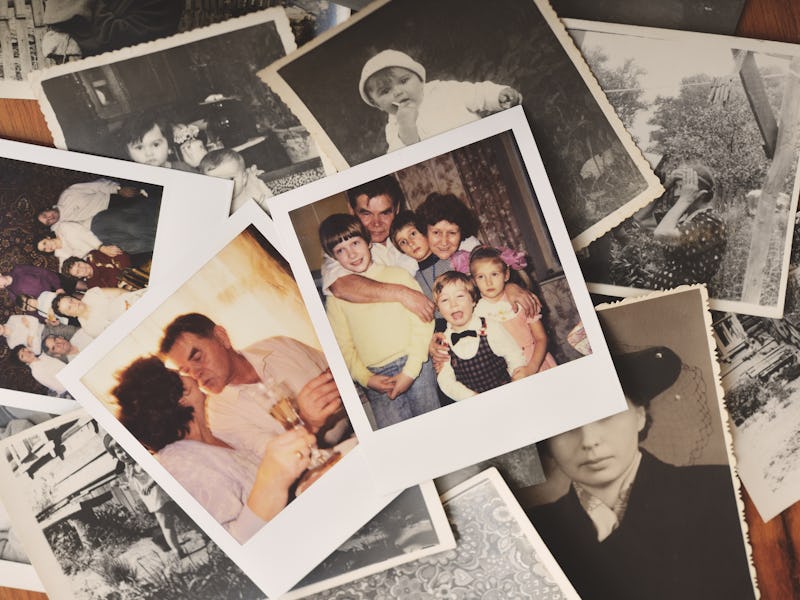TikTok’s “core memories” trend reveals a fundamental aspect of how humans create identity
Our memories don’t stay in their original form. Here’s why.

Splashing in the rain with your family. Getting engaged. Sledding down a hill with your dog. These “big” little moments are getting their own moment in the Sun as part of the “core memories” trend on TikTok. Presented with gentle music and the appropriate hashtags, “core memory” clips have been watched billions of times. They’re a riff on the core memories featured in the Pixar film Inside Out — important life events that come to define your personality and self.
While experts agree Inside Out’s artistic interpretation of emotions mostly jibes with actual science, the film doesn’t quite get memories right. You can’t identify a “core memory” as it happens.
“Core memories are not real in that we do not record events and do not retain nuggets of clear and vivid memories that can be uncovered in their original form,” Simona Ghetti tells me. Ghetti is a professor at the Center for Mind and Brain at the University of California, Davis.
We do, Ghetti explains, remember events that we deem important, and we might reflect on these when we consider our identity. But individual experiences do not need to be “recalled explicitly to shape our behavior,” she says.
“Our very act of thinking of those memories may change them and reinforce our beliefs about their meaning,” Ghetti says. Rather, what these TikToks do manage is something else essential to self-identity: They tell stories.
How do we make memories?
Memory is complicated. Humans make several broad types of memories and these have their own subcategories and can overlap with each other.
Autobiographical memory refers to memories of personal events. They are often a complex blend of semantic memories — long-term memories that represent your general knowledge of the world — and episodic memories — specific episodes from the past. Autobiographical memory is influenced by social interactions and helps inform the “stories of self” which make up our narrative identity — our life story.
The very act of remembering can alter a memory.
Autobiographical memory research reveals a phenomenon called the “reminiscence bump.” When older people look back on their past, they tend to remember moments that happened when they were between 10 and 30 years old. These memories tend to be positive, regardless of how the person felt at the time. Not only do older people remember more events from this time of their lives — they remember them with affection.
One explanation for this is “cultural life script theory.” In a 2011 paper published in the journal Memory, researchers define life scripts as “culturally shared expectations about the order and timing of life events in a prototypical life course.” That may explain why the “reminiscence bump” often homes in on memories of milestone events, like graduations, marriages, and having children.
“The exact experience for two people may be interpreted very differently, elicit two different reactions, and have different consequences, merely due to their prior histories.”
Autobiographical memories are part of these life scripts. In a 2012 paper published in the Journal of Personality, researchers explain how autobiographical memories may feed into a person’s long-term goals — which are shaped by life scripts — and so “evolve” into self-defining memories.
“Healthy narrative identity combines memory specificity with adaptive meaning-making to achieve insight and well-being,” the study authors write. “Both self-defining memories and narrative scripts serve as the ingredients for an overall life story that, with time, grows in complexity as it adds ‘chapters’ across lifespan.”
Our idea of self, in turn, is influenced by autobiographical knowledge and the “conceptual self” — how we perceive our behaviors, abilities, and characteristics.
The complicated science of personalities and memories
Narrative identities are thought to be a part of one’s personality. Our personalities are shaped by several forces, explains Jennifer Ryan, a professor at the University of Toronto. Our environment, our biology and our interactions with others can all influence our personality.
This concept gets to the idea behind TikTok’s “core memory” videos. But memories are easily distorted. We can’t say that precise moments — like the ones captured on TikTok — shape a person's identity, now or in the future.
The act of remembering itself can alter a memory. Your mood at the time you remember something can also reshape your memory. It is true that humans use autobiographical memories to create our identity, but we constantly change facts and add false details without even realizing it. We are also influenced by the recollection of others: Your memory may in truth be a recollection of a story or a video of an event, rather than a memory of the actual event as it happened. This is true whether or not you experienced something alongside another person: You can both have entirely different recollections of the exact same sequence of events.
“The exact experience for two people may be interpreted very differently, and elicit two different reactions and have different consequences, merely due to their prior histories,” Ryan says.
“It would generally be difficult to know with certainty beforehand which memories will gain prominence for a given individual,” she adds.
It’s fun to capture important moments, and it can feel meaningful to look back on them. What makes those moments powerful isn’t the event — the power comes from your emotions and how you use your recollections to build your life story.
This article was originally published on